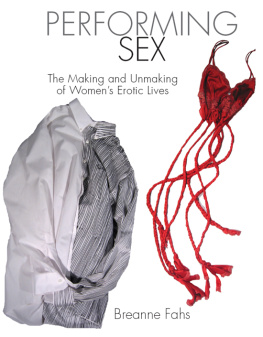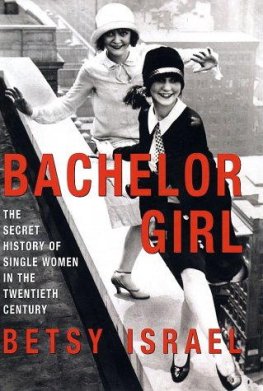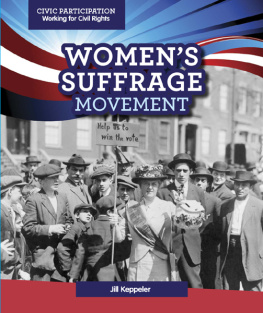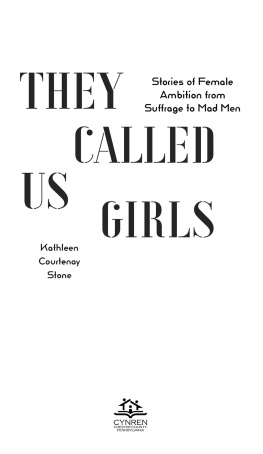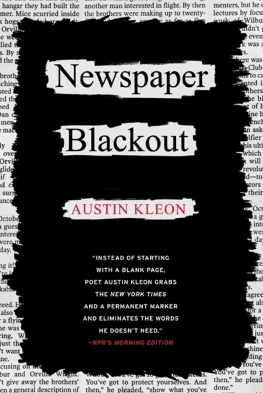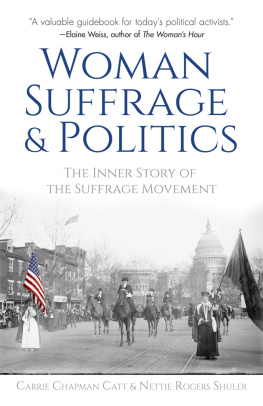Contents
chapter one
Among the Newspaper Women
chapter two
The Womans Page
chapter three
Human Interest
chapter four
Bachelor Girls
chapter five
Adventure
chapter six
Work
chapter seven
Travel
epilogue
Toward suffrage
Illustrations
Newspaper women of the New York World
Nellie Bly trade card
Poster advertising Best Womans Page Printed, New York Sunday World for April 12, 1896
Poster advertising Articles by Nellie Bly and Kate Swan, New York Sunday World for March 8, 1896
Poster advertising feature on A New Dissipation of New York City Girls, New York Sunday Journal for March 15, 1896
Womans page announcement that Marion Harland to Write Exclusively for the Tribune, Chicago Daily Tribune, October 29, 1911
Mrs. Fannie Barrier Williams
Teresa Dean
Drawings by Miss Jessie Wood at Newport, New York Journal, August 3, 1898
Drawing of Kate Carew
Beatrice Fairfax [Marie Manning]
Olivia Dunbar
Illustrated article titled Old Maids No MoreAll Girl Bachelors Now, Chicago Daily Tribune, September 26, 1897
Kate Swan in the Death Chair, New York World, February 16, 1896
Kate Swan Scales Harlem River Bridge, New York World, April 19, 1896
Elizabeth L. Banks and her poodle, Judge
Zona Gale
Eva Valesh
Drawing of Rose Harriet Pastor
Margherita Arlina Hamm
out on assignment
Introduction
In 1891 Margherita Arlina Hamm began writing Among the Newspaper Women for the New York Journalistthe first newspaper column ever devoted to newspaper women as a group. Chronicling the work of women newspaper writers around the country, but especially in New York, Hamm conjured up a world of public sociability. There were some four or five newspaper women met accidentally Thursday evening at a restaurant on Broadway, she began her first column; they all became confidential in a short while, as is the habit of newspaper women. Not confidential about their inner lives, but about their business I mean. On the face of it this was a casual statement about a casual meeting of women in public, but it also deliberately laid claim to a public community of independent women in one of the most famous public spaces of New York.
With her column, which she continued to write weekly over the next two years, Hamm publicized the activities of some of the hundreds of women who were entering newspaper work nationwide at the turn of the century. But she did more, as well: by writing about what newspaper women were thinking and doing, by reporting their conversations in the printed columns of the Journalist, Hamm also created a new public space for women within the world of print culture. As she did so, her column joined the work of numerous other newspaper women, who at the turn of the century wrote widely of new work opportunities for women, developed new newspaper genres such as advice columns and interviews, explored new living arrangements for women, advocated extensive travel, and covered and promoted womens political activism. Their work shaped new public spaces for women within the physical pages of the newspaper, while also writing into being a far-flung new public world of women.
We get some sense of newspaper womens active creation of this new public realm when we examine the career of the ambitious and prolific
Hamm is not remembered today as part of journalism history, much less the history of women. But in this neglect she is far from alone: we know little about most of the women who took up newspaper work at the turn of the century and created new public spaces for women in print. Instead, the history of newspaper women follows well-worn grooves: it highlights the daring of the pioneering and influential Nellie Bly (Elizabeth Jane Cochrane); it discusses the so-called sob sisters who covered the notorious 19078 trials of Harry K. Thaw for the murder of architect Stanford White. These were prominent newspaper women, to be sure. But in between we have missed an entire generation of female journalists and a richly networked public community.
Many of the women who are the subjects of this book have been hiding in plain sight for over a century. They achieved a measure of fame in their own day; enlivened the pages of metropolitan mass-circulation papers that sometimes reached hundreds of thousands of readers; innovated across a variety of new genres, developing styles of newspaper writing that in some cases remain startlingly fresh today; and created a rich set of public conversations within the public spaces of the newspaper. Thanks to the rapid
Not only were their writings vital in shaping and disseminating ideas regarding womens changing lives, but they also created a set of public conversations about the cultural politics of modern life. Publicationthe raison dtre of newspapers, after allgave these women new access to the power of publicity, which they could use to circulate their ideas. Publicity was itself a rapidly evolving term and set of practices in American democratic life at the turn of the century; its positive connotations included public attention, access, and knowledge. Publicity could act as a searchlight that exposed areas of American life in need of reforman important aspect of a democratic culture, many newspaper women agreed.
# # #
Yet newspaper women did not have unlimited access to the power of publicity; there were numerous constraints on women reporters such as Hamm, as we shall see. Likewise, publicity was by no means always a positive good in womens lives: publicity could also imply notoriety, and it increasingly referred to practices of promotional manipulation. Still, there is no question that newspapers were a significant new public space for women in American life, one in which they discussed, shaped, and imagined new public liveseven as they became public figures themselves.
When Margherita Hamm arrived in the rapidly expanding metropolis of New York City in the late 1880s, she entered a fast-changing newspaper world. Among the established major newspapers were the Sun, the Herald


